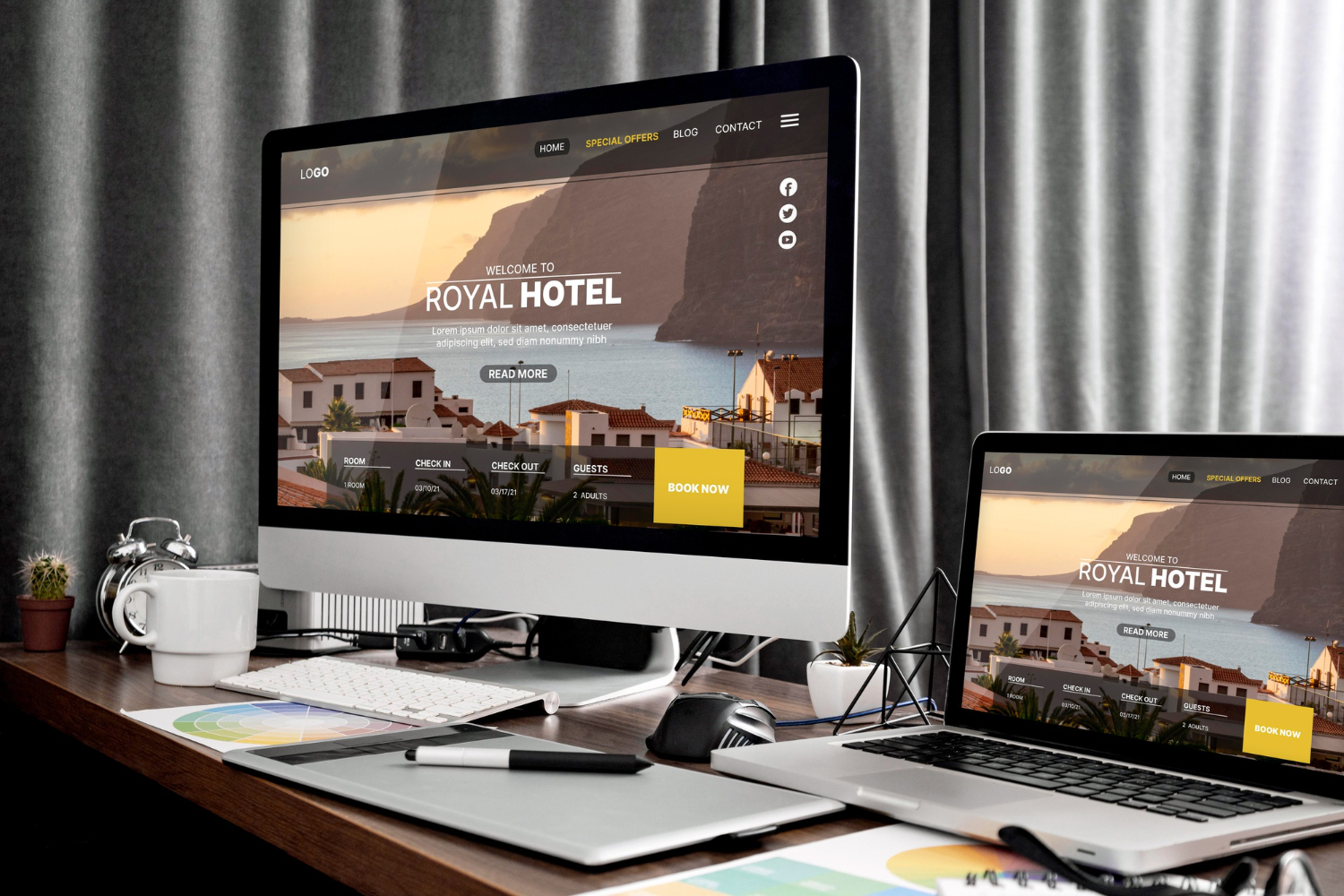A well-crafted portfolio is essential for any web designer on Fiverr. It’s the perfect way to showcase your skills, attract potential clients, and build trust. In this guide, we’ll walk through the steps of creating an effective portfolio to highlight your Fiverr web design projects. From selecting your best work to organizing your portfolio and making it accessible to clients, these tips will help you stand out in a competitive marketplace.
Table of Contents
Toggle1. Why a Strong Portfolio is Crucial for Fiverr Web Designers
As a web designer on Fiverr, your portfolio is your best marketing tool. It serves as a visual resume, showing potential clients what you can do and how well you can do it. A strong portfolio helps build trust and credibility, giving clients confidence that you can deliver high-quality work.
On Fiverr, clients often browse multiple gigs before choosing a freelancer, so having a standout portfolio can set you apart from the competition. By displaying your skills, creativity, and a variety of successful projects, your portfolio can also increase conversion rates, making it easier to turn profile visitors into paying clients.
2. Select Your Best Projects to Showcase
The key to a great portfolio is quality over quantity. It’s tempting to include every project you’ve ever worked on, but it’s better to be selective. Focus on showcasing a diverse range of projects that highlight your skills in different areas, such as WordPress development, eCommerce design, or landing page creation.
Choose projects that reflect the type of work you want to continue doing. If you’re interested in working with small businesses, highlight websites you’ve designed for startups or entrepreneurs. If you’re more focused on eCommerce, showcase your best online store designs. Additionally, prioritize projects that received positive feedback or led to satisfied, repeat clients.
3. Include Before-and-After Examples
One powerful way to showcase your web design skills is by including before-and-after examples in your portfolio. These examples demonstrate the value you bring to a project by showing the transformation from the original design to the final product. Potential clients can see how you’ve improved the visual appeal, usability, and functionality of a website.
Use side-by-side comparisons to make the transformation easy to understand. For example, show how you turned a cluttered, outdated homepage into a sleek, modern, and responsive design. Highlighting these changes helps clients see the tangible results of your work, making them more likely to trust you with their own web design projects.
4. Write Case Studies for Key Projects
A case study is more than just a visual representation of your work—it’s a story that explains the process behind it. Writing case studies for a few key projects adds depth to your portfolio, showing potential clients how you approach challenges and deliver solutions.
In each case study, start by describing the client’s problem or goal. Then, explain the steps you took to design and develop the website, including the tools and technologies you used (e.g., WordPress, HTML/CSS, Shopify). Finally, summarize the results and include any client feedback or testimonials. Case studies provide a behind-the-scenes look at your work, helping clients understand the value of your services beyond just the visual output.
5. Organize Your Portfolio for Easy Navigation
A well-organized portfolio is key to making a good impression on potential clients. Group similar projects together by category or industry to make it easier for visitors to navigate. For example, you can have sections for eCommerce websites, portfolio sites, and landing pages.
Use clear headings and ensure that your portfolio is easy to navigate, with simple menu options or filters that allow users to find specific types of projects. Also, ensure your portfolio is mobile-friendly, as many clients will browse your portfolio on their smartphones. A seamless and user-friendly experience makes it more likely that potential clients will stay engaged and explore your work further.
6. Use High-Quality Images and Visuals
Visuals are the core of any web design portfolio. Make sure to use high-quality images and clear screenshots that showcase your work in the best possible light. Each project should include multiple screenshots that show off different aspects of the design, such as the homepage, mobile view, and any custom features or elements you created.
Avoid using stock images or mockups that don’t reflect your real work. Instead, focus on authentic examples from your Fiverr projects. High-quality visuals not only make your portfolio look professional but also help clients visualize the kind of work you can deliver for them.
7. Include Client Testimonials and Reviews
One of the best ways to build trust with potential clients is by including client testimonials or Fiverr reviews in your portfolio. Positive feedback from previous clients adds credibility and shows that you’ve consistently delivered high-quality work. Whenever possible, place testimonials next to the corresponding project to provide context.
For example, after showcasing a WordPress website you designed, include a review from the client that highlights how happy they were with the final result. Testimonials serve as social proof, reassuring potential clients that you’re reliable, talented, and easy to work with.
8. Keep Your Portfolio Updated Regularly
A portfolio is a living document, and it’s important to keep it updated with your latest work. As you complete new projects on Fiverr, make sure to add them to your portfolio and remove older, less impressive work. Regular updates show potential clients that you’re active, continuously improving, and staying on top of current web design trends.
If you take on a project that demonstrates a new skill or service, such as SEO optimization or responsive design, be sure to showcase it in your portfolio. Keeping your portfolio fresh and relevant will help you stay competitive in Fiverr’s marketplace.
9. Link Your Fiverr Profile and Gigs to Your Portfolio
To maximize the impact of your portfolio, make it easy for potential clients to hire you after viewing your work. Include links to your Fiverr profile and specific gigs directly within your portfolio. This ensures that when a client is impressed by your work, they can immediately click through to your Fiverr page to place an order.
You can also add call-to-action buttons that encourage visitors to explore your Fiverr services, such as “See my full Fiverr profile” or “Hire me on Fiverr.” This seamless connection between your portfolio and Fiverr profile makes it easier for potential clients to take the next step.
Conclusion
Creating a strong portfolio is essential for web designers on Fiverr who want to showcase their skills and attract more clients. By selecting your best projects, writing case studies, including client testimonials, and organizing your portfolio for easy navigation, you can present your work in a way that builds trust and encourages clients to hire you. Keep your portfolio updated with fresh projects and link it to your Fiverr gigs to maximize your visibility and success in the Fiverr marketplace.



